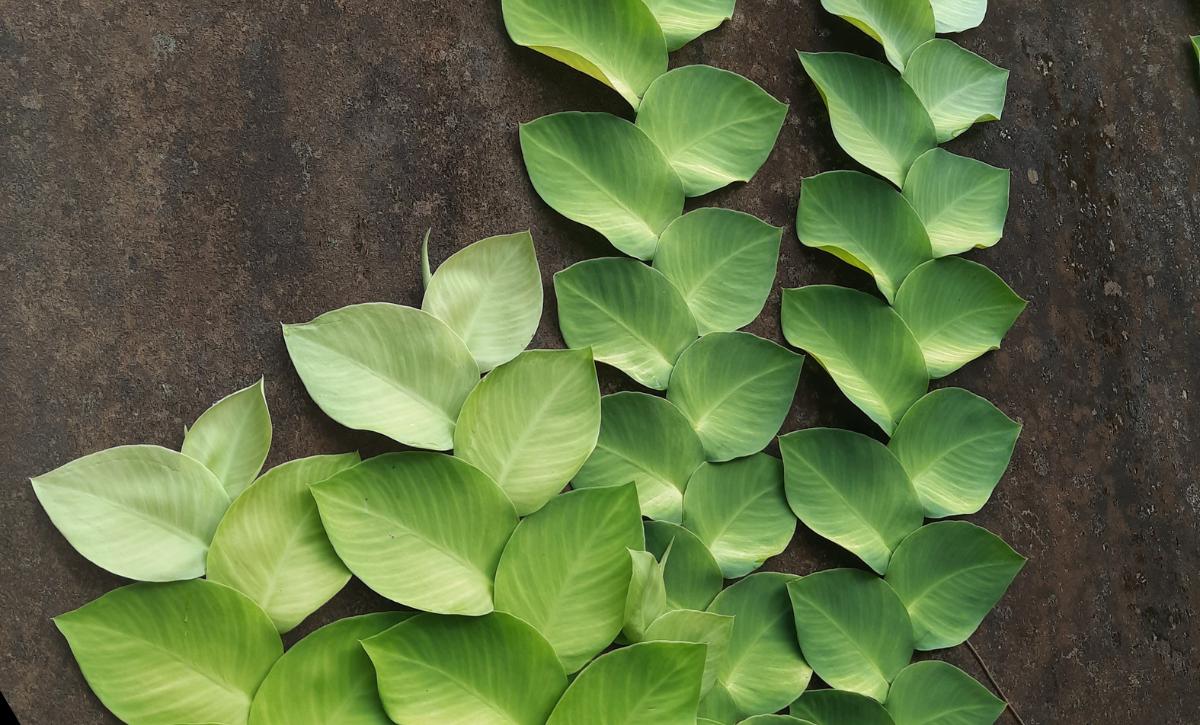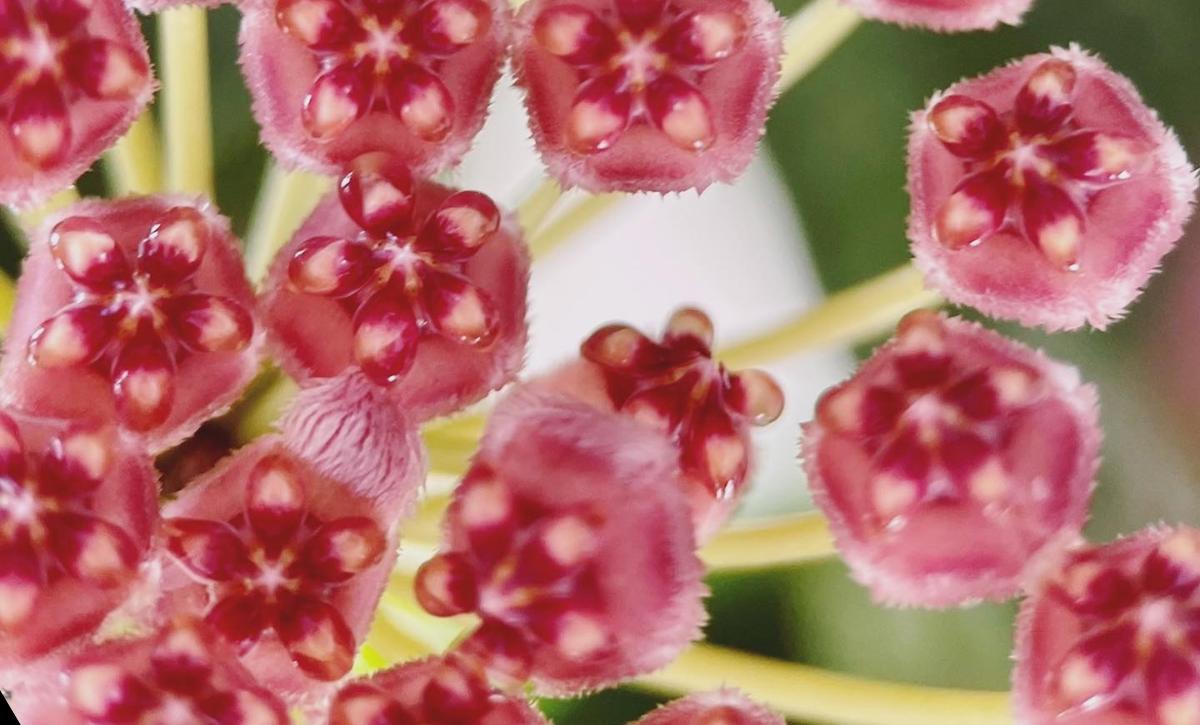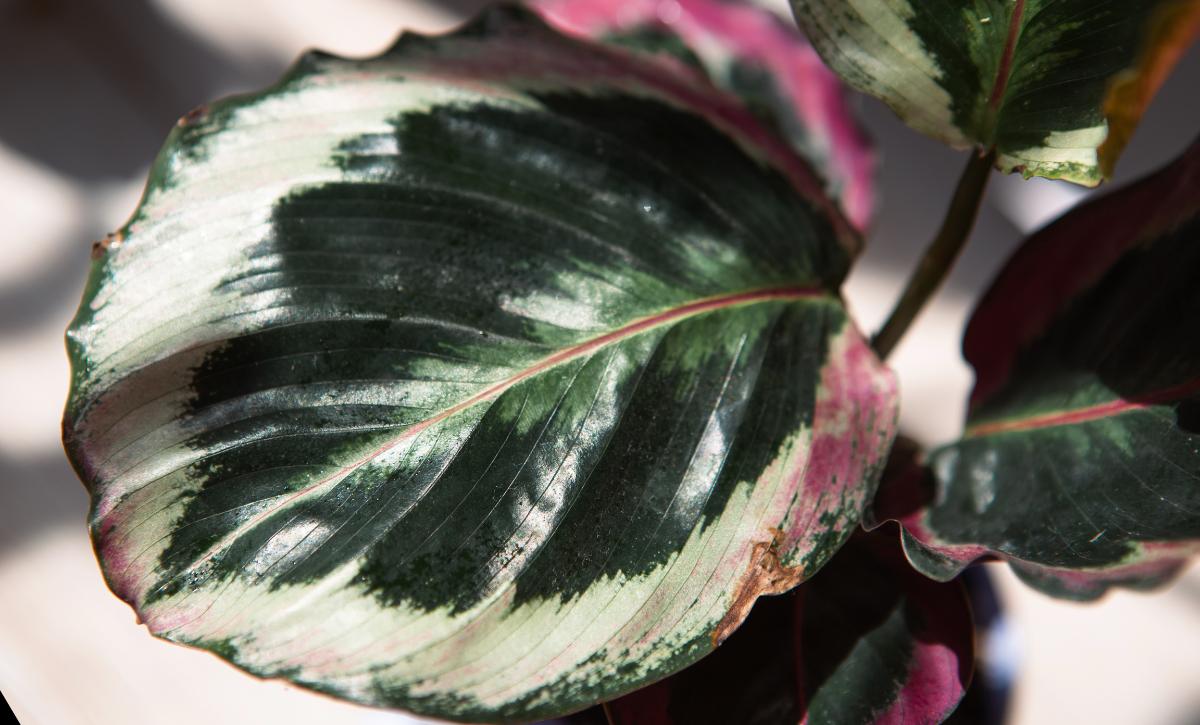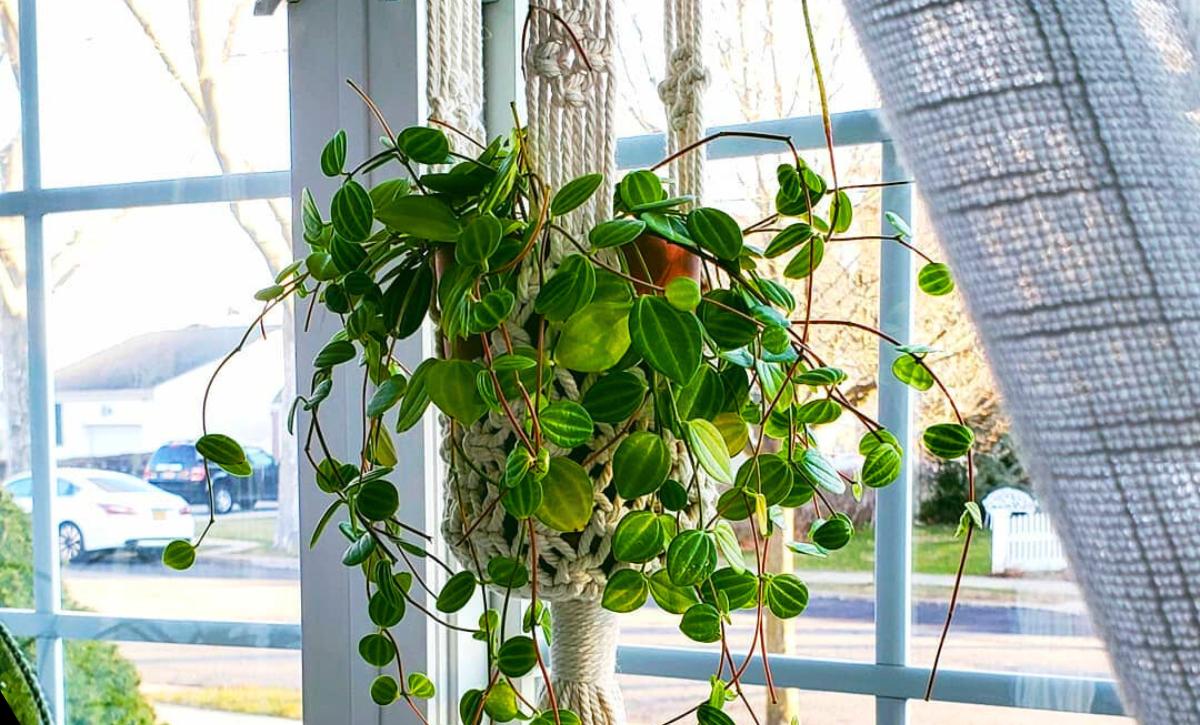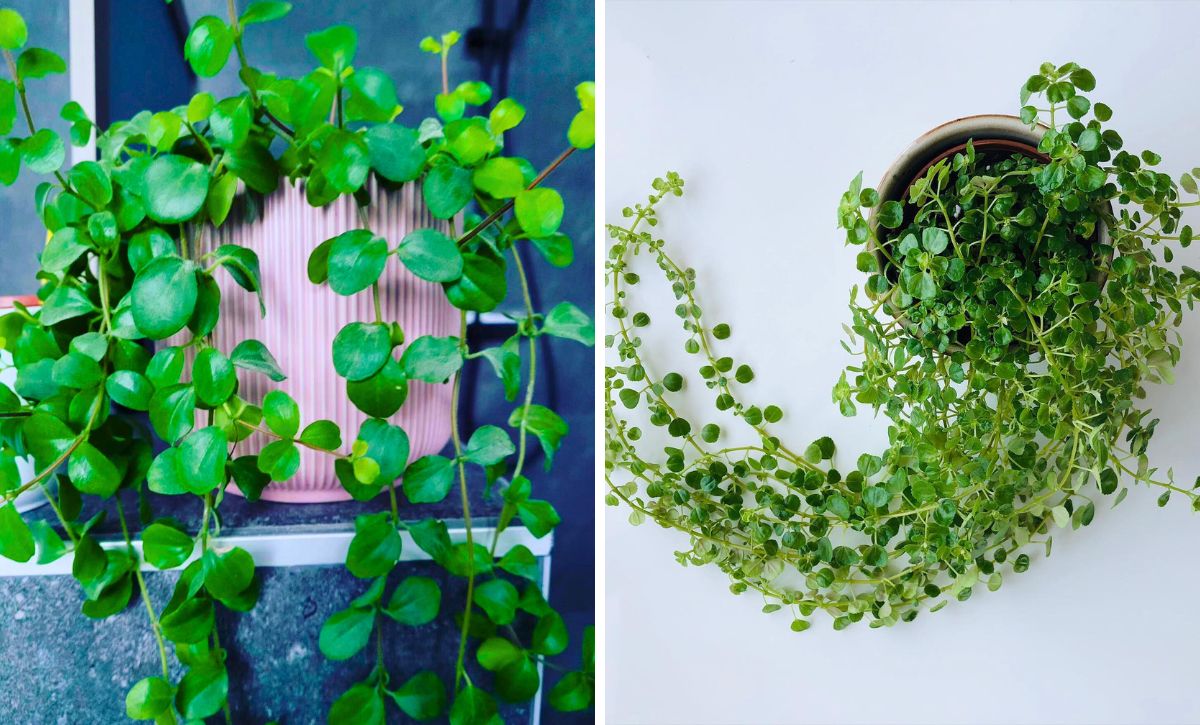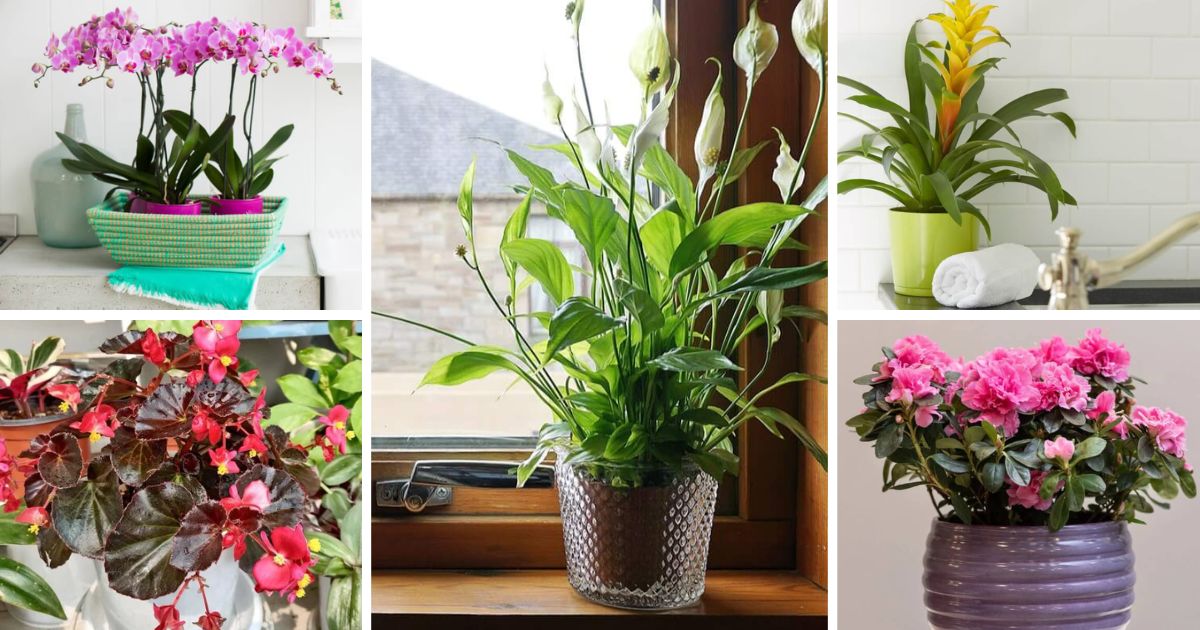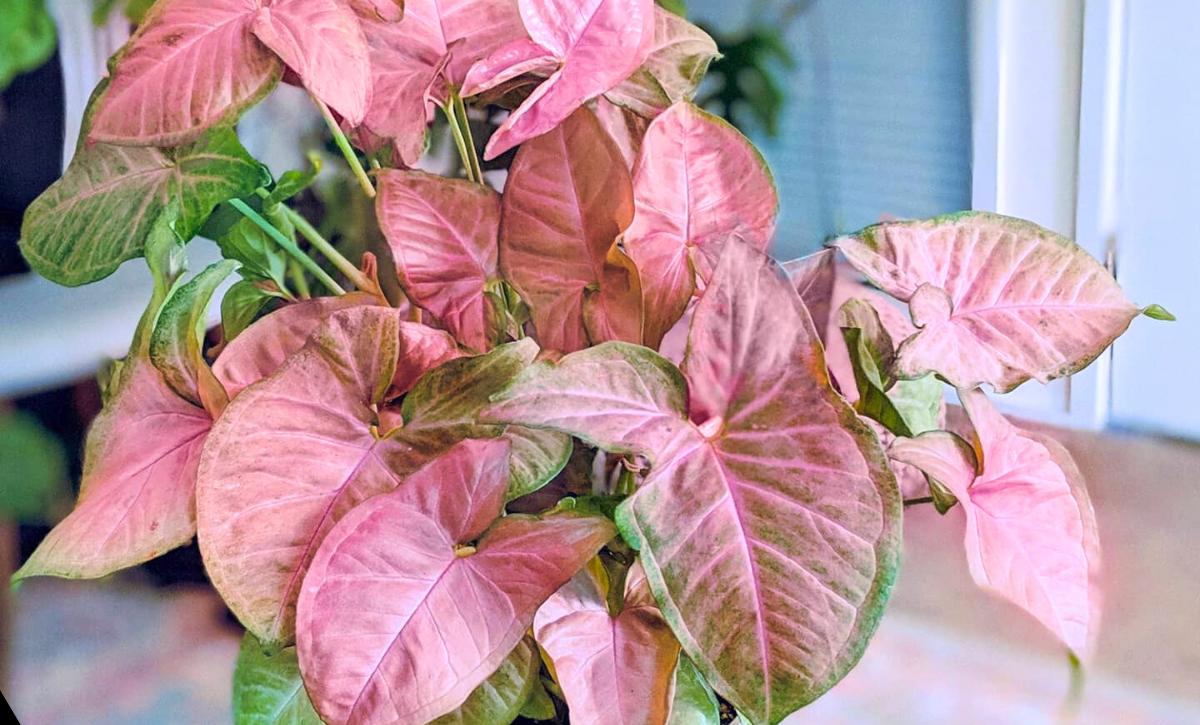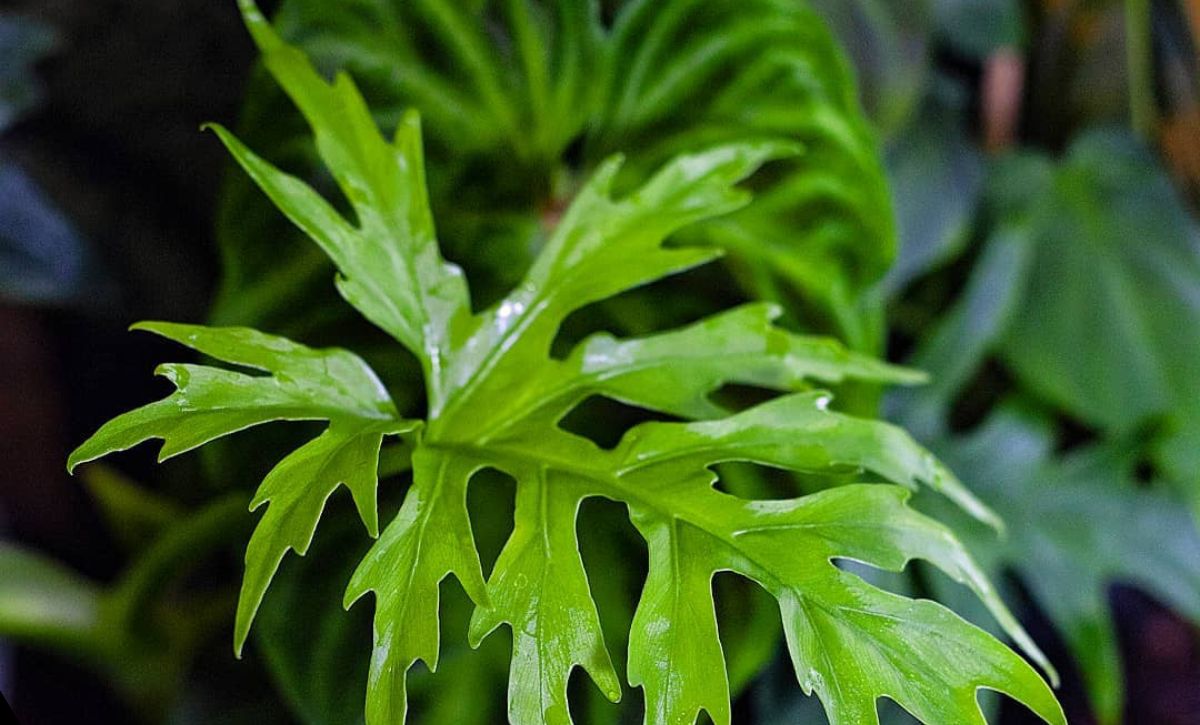Have you ever heard of hydroponics? This is a method of growing plants in water. That may be herbs, vegetables, fruits and also indoor plants.
Today we are going to take a look at the indoor plants that can grow in water. Some of them can stay forever in the water environment, others should be transplanted after a year or after they develop roots.
Taking care of indoor plants in water is certainly an easy gardening method and a wonderful way to create a minimalist natural impact on the interior.
1. Pothos
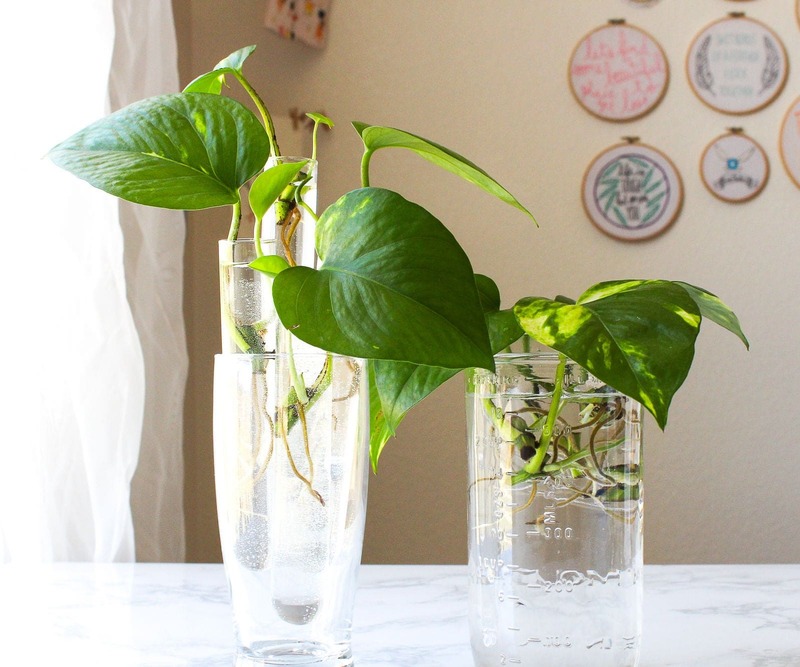
This easy-to-care-for plant is the first example in our collection of plants that grow in water. To grow it in a hydroponic environment, prepare a container, fill it with water and cut a length of Pothos from a matured vine.
It should have at least three or four nodes and all the leaves that will go into the water be cleaned because they will otherwise rot.
2. Peace Lily
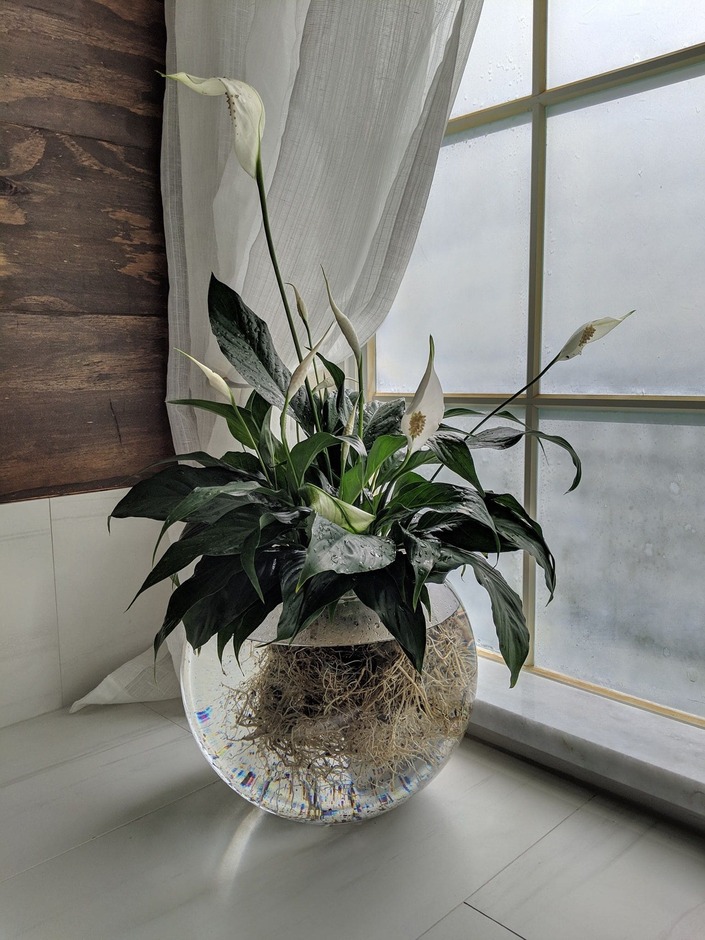
Peace lilies look amazingly in a transparent glass container. To grow it in water, remove the plant from the pot and clean the roots from the soil with water.
When you place the plant into its new container filled with water, make sure that its base is above the water. Its base and leaves can quickly rot if they are dipped constantly in water. For that purpose, choose a container with a narrower neck or use gravel to create a base above the water.
Change the water every two weeks to help the plant feel comfortable in the water environment.
3. Philodendron
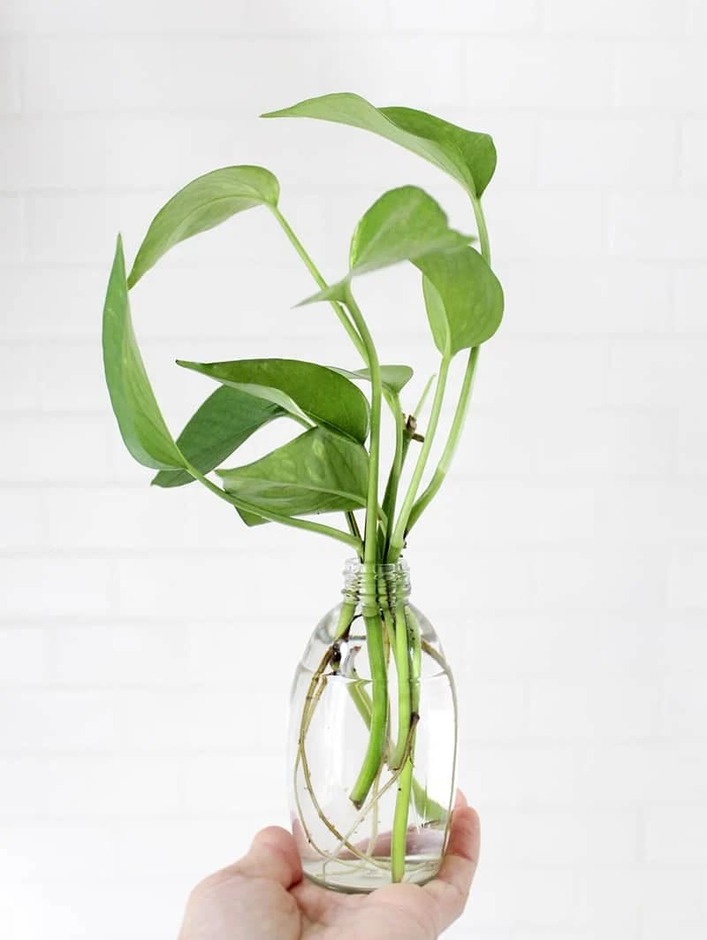
The Philodendron with heart-shaped leaves is one of the most adaptable varieties in its family. You can grow it in water simply by cutting a stem from the mother plant.
Change the water every 3-4 days to let it grow. If you see that the plant grows but it doesn’t produce enough leaves, then it is missing light.
4. Chlorophytum (Spider plant, Airplane plant)
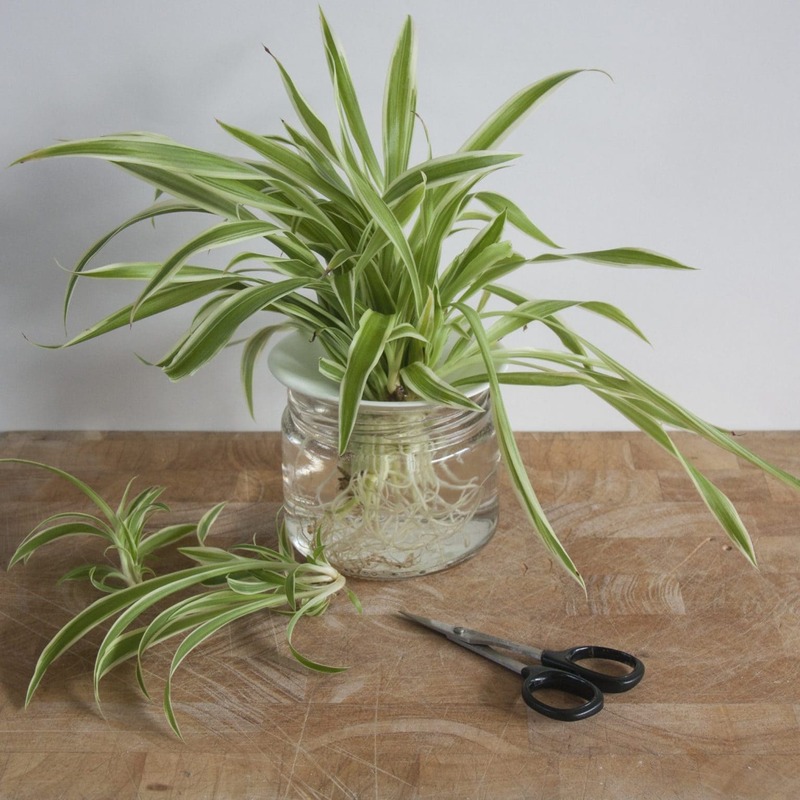
Spider plant produces young stems sticking out of the mature plant called spiderettes. This is its most specific characteristic and it makes it so unique and beautiful.
This plant variety is easy to care for as long there is bright indirect light and good drainage. The spiderettes are the spider plant’s way to propagate. You can grow the young plants in water or in soil. Make sure that you place the container next to the mother plant and cut the stem connecting them once the roots of the spiderette are developed.
5. Chinese Evergreen
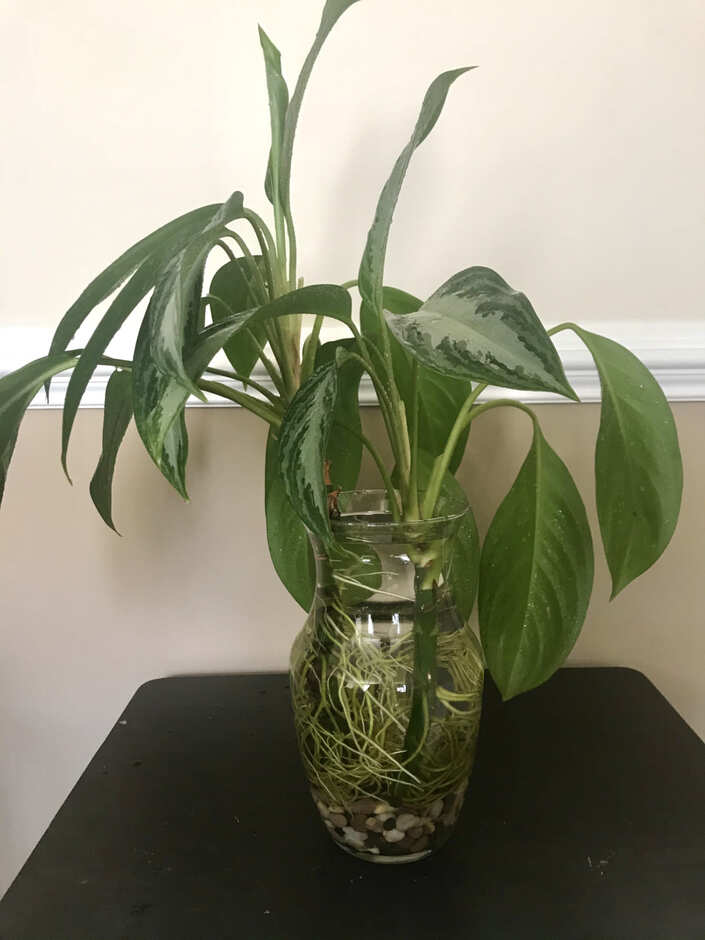
Chinese evergreen is a common name for the subfamily Araceae, Aglaonema. This subfamily consists of many in number leafy plants whose leaves are usually variegated with white, purple, yellow or green speckles.
All of the varieties in the Chinese evergreen subfamily can be propagated and grown in water. Most of them prefer bright indirect light. Cuttings should be taken from a healthy matured Aglaonema. Always remove the bottom leaves that are under water because they will otherwise rot.
When you see the water becomes blurry, replace it with fresh. Roots would appear in 2-3 weeks.
6. Dieffenbachia (Dumb cane)
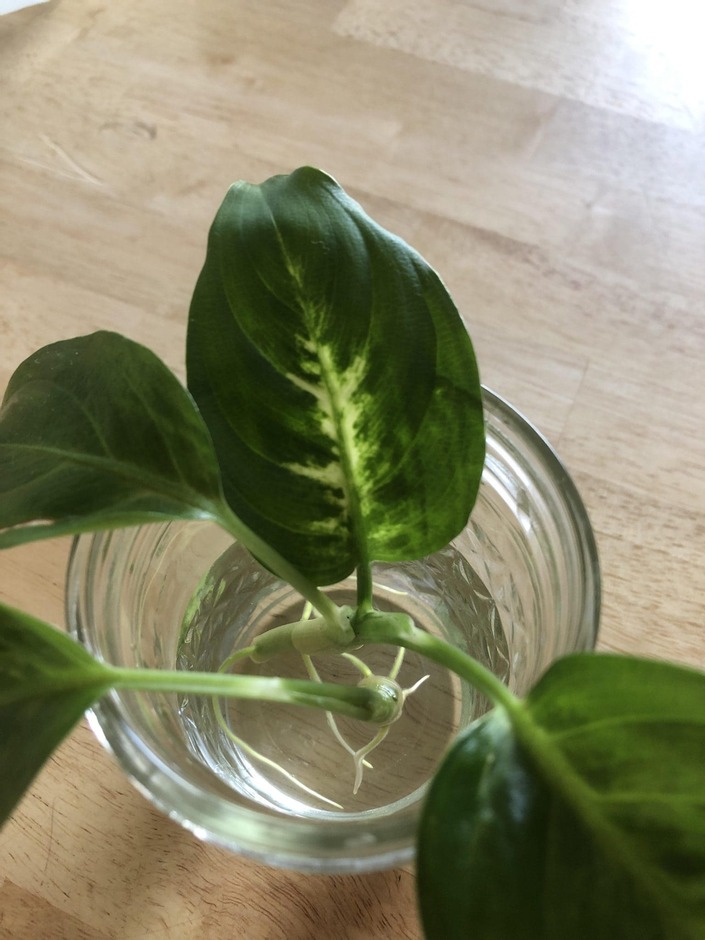
Dieffenbachia is a beautiful leafy plant. Its foliage features large oval-shaped leaves variegated with a creamy vein.
The cuttings that are about to be grown in water must be between four and six inches long. Change the water in the container every few days and keep it at bright indirect light and warm temperatures. Mind that propagation in water doesn’t give quick results as growing in soil so you can add drops of liquid fertilizer to the container every time you change the water.
7. Dracaena
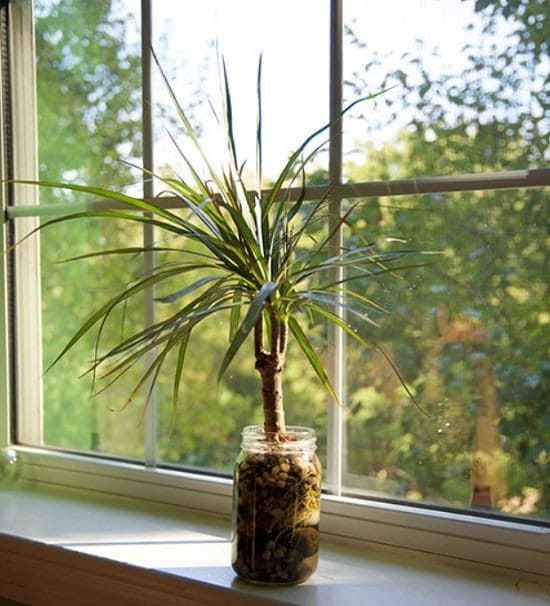
Dracaena is one of those plants that can grow in water forever! This and its impressive interior impact may be the reason why most gardeners prefer to grow it hydroponically.
Planting the Dracaena in soil doesn’t have any specific requirements but when it comes to water, you should consider the following tips. Don’t put the cutting directly in water. Leave it in a dry place for two days which will let the wound dry. Never use tap water because of chlorine- rainwater or distilled water provide optimal growth properties.
8. Arrowhead
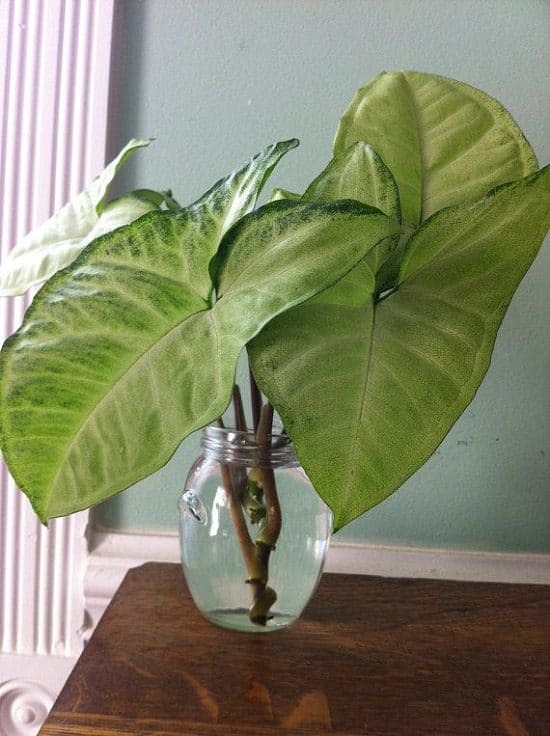
Similar to the Dracaena, the Arrowhead plant can also live in water forever. This plant is easy to care for. It features large spade-like leaves from dark green with white to lime variegation.
Take a cutting from a matured plant and place it in a container with distilled or rainwater. The best conditions to grow a healthy plant in water are bright indirect light, warm temperature and frequent change of the water. You can stimulate the growth with a few drops of fertilizer every time you replace the water in the container.
9. Aluminum Plant
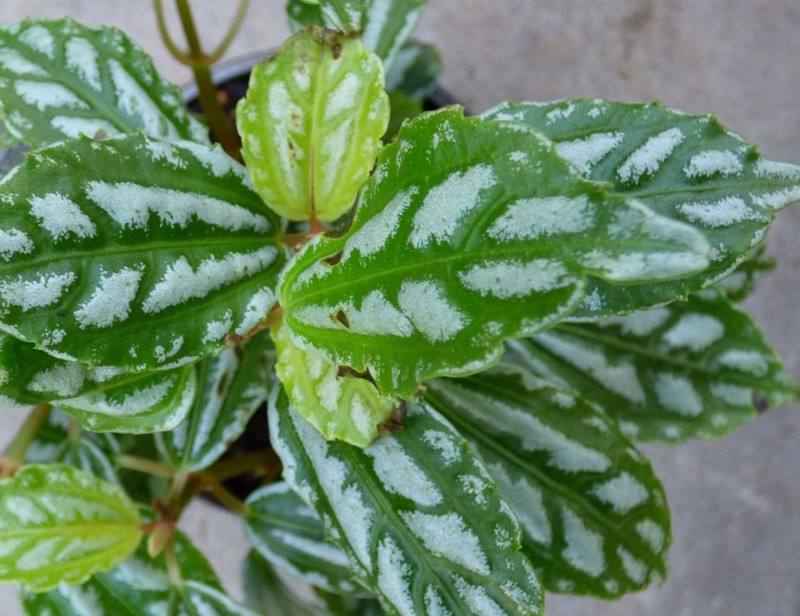
Cut a stem from a matured Pilea cadierei just below a node if you want to propagate a new Aluminum plant. You can also transplant a matured plant into a water container by cleaning the roots from the soil.
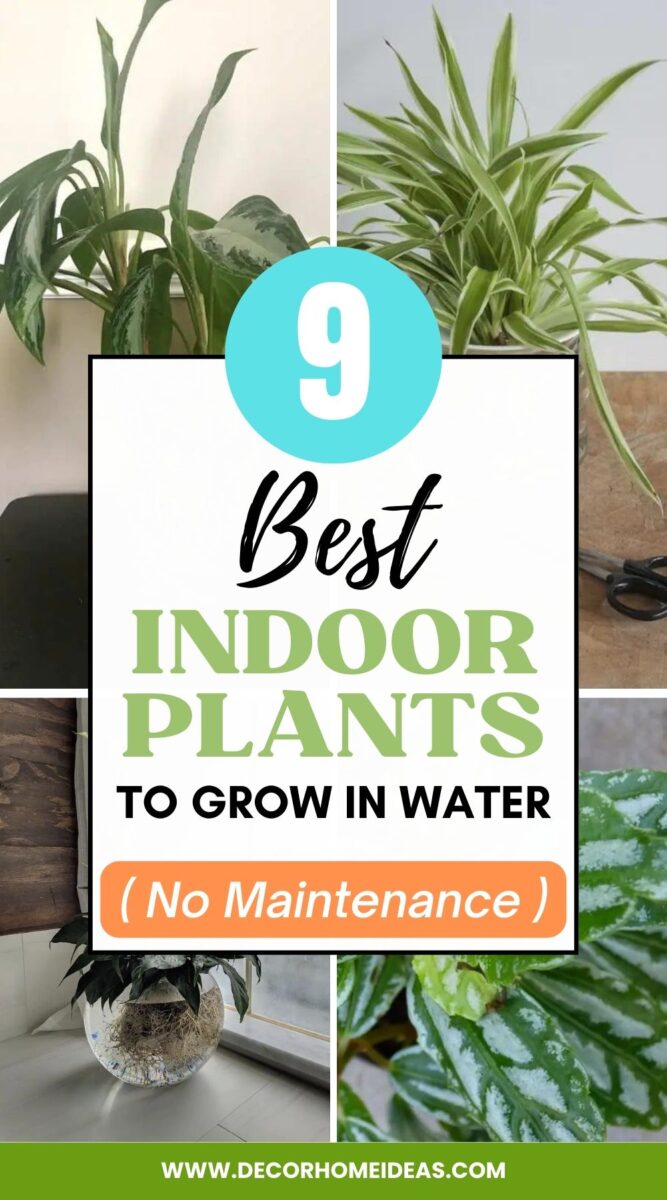
The plant will be missing the nutrients it gets from soil, therefore it is important to add a suitable fertilizer every month.
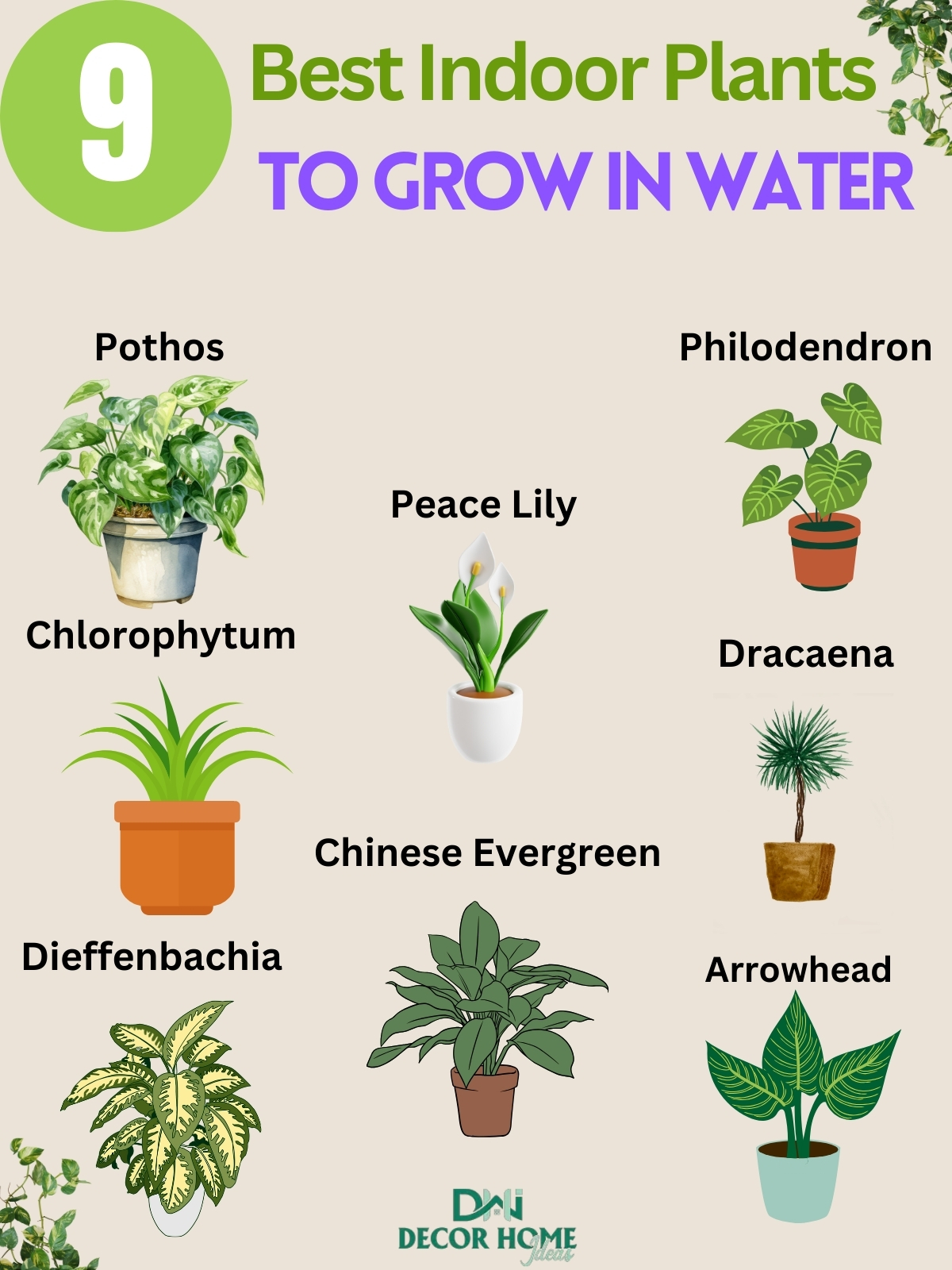
Enjoy hassle-free greenery with these indoor plants that thrive in water.
Pothos and philodendron root quickly, while peace lily and Chinese evergreen add elegance.
Dracaena and arrowhead plants bring unique foliage, and dieffenbachia offers bold variegation.
Chlorophytum (spider plant) is easy to propagate, making these perfect low-maintenance choices for water-based growth!

